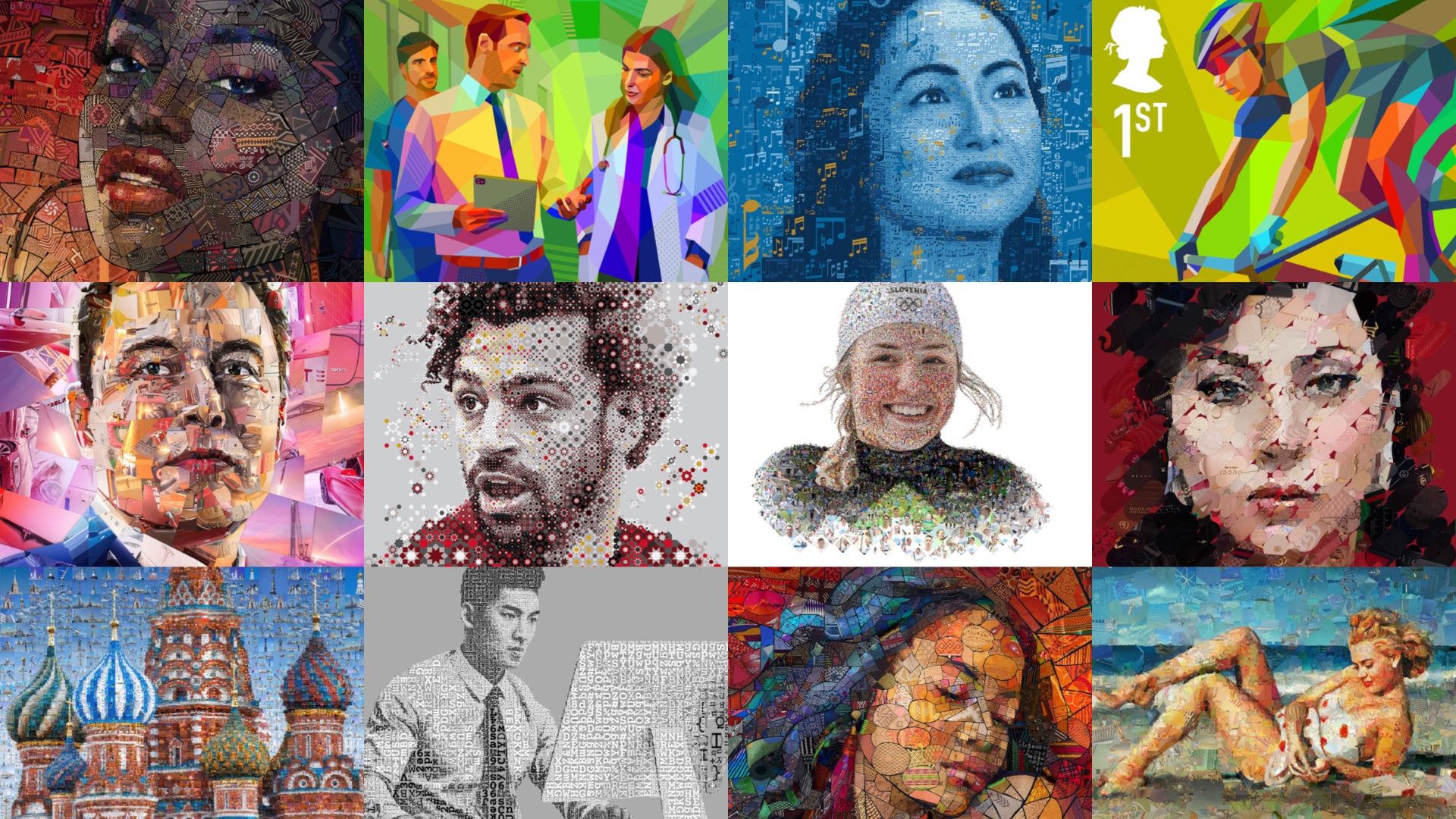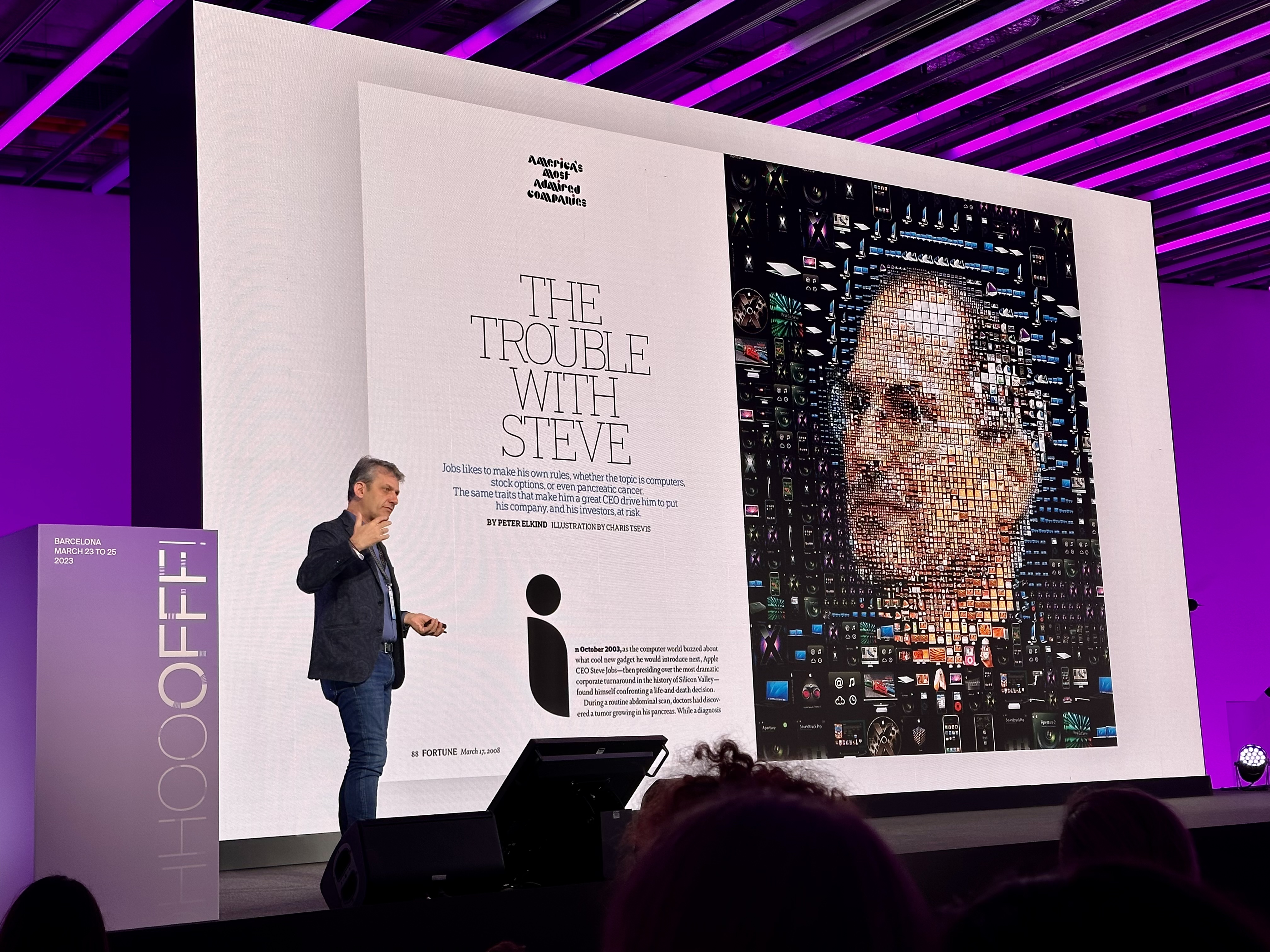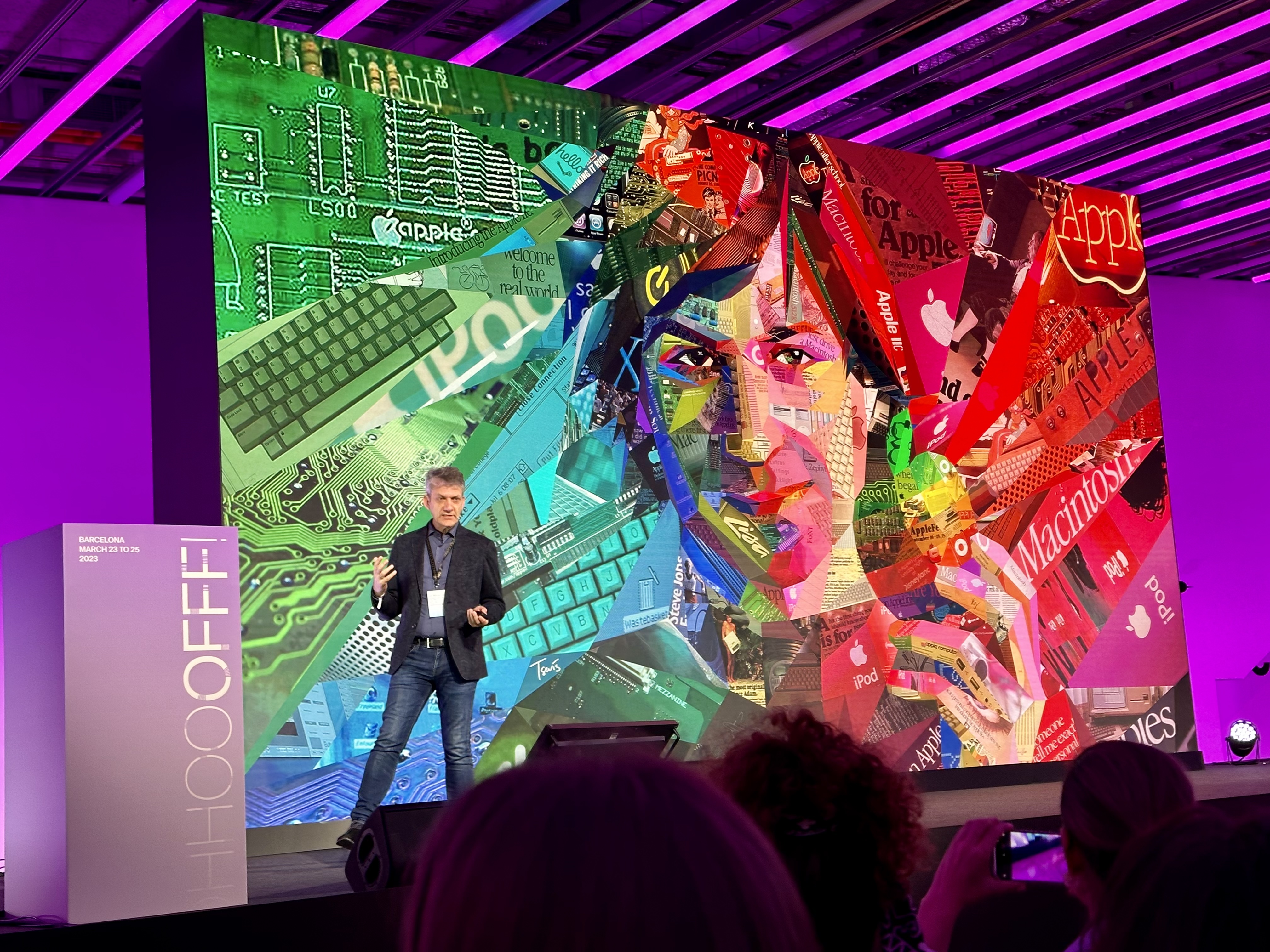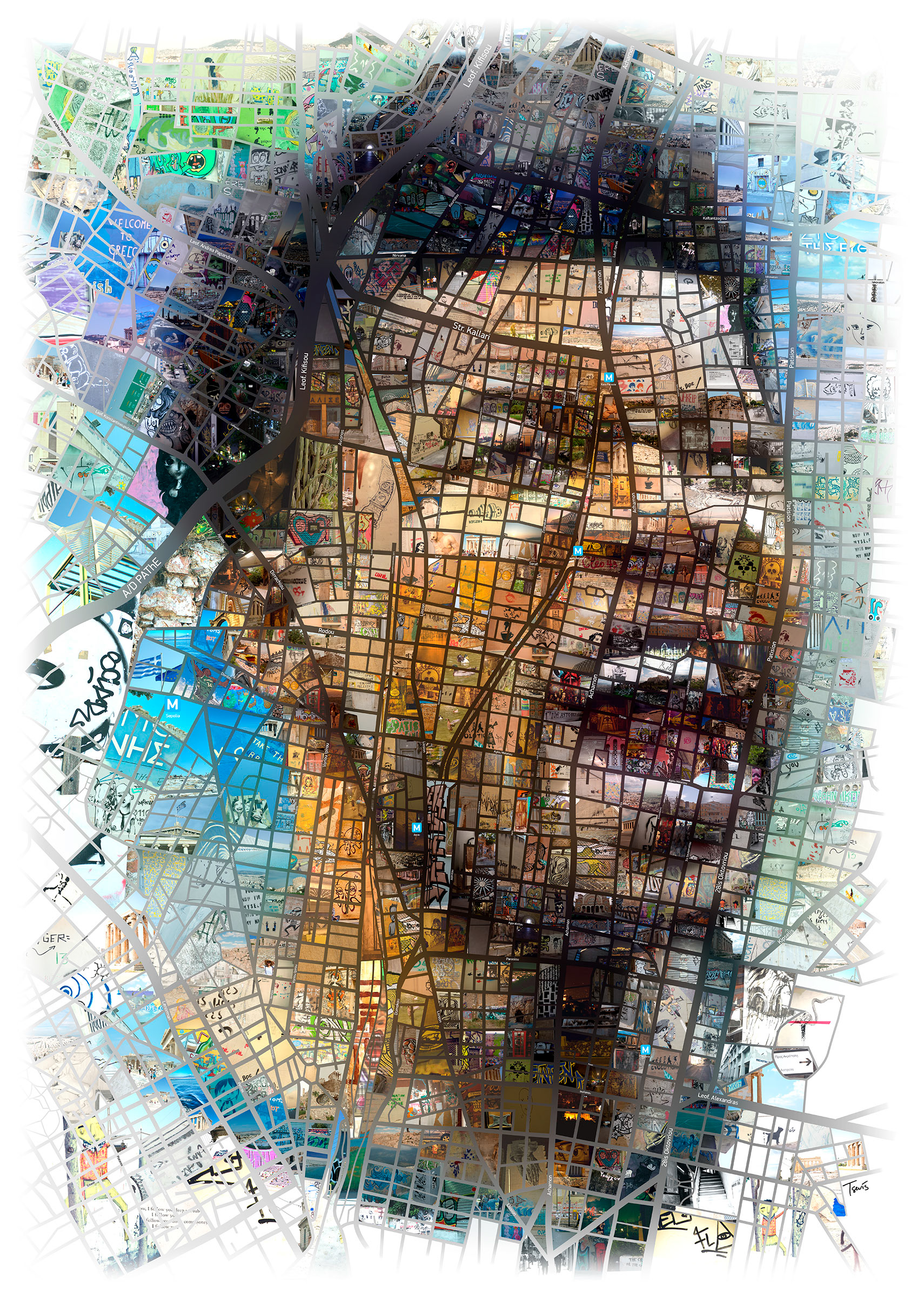
OFFF Festival 2023 is well underway in Barcelona, with artists and designers from across the globe taking the stage to share wisdom about everything from their workflow to their career. Among them is Greek, Cyprus-based Charis Tsevis, whose mosaic-based designs enjoy international acclaim.
Tsevis rose to prominence when a mosaic portrait of Steve Jobs, designed entirely using Apple icons of various sizes, went viral. This led to commissions from Fortune magazine and more, and now Tsevis’s studio works with clients including Nike, Google and Ikea. At OFFF, he shared 5 important lessons for early success. (Inspired to create a digital mosaic of your own? Take a look at our guide on how to download Photoshop.)

Tsevis describes himself as “a visual designer living on the sunny side of the planet” – both literally and metaphorically. “This bio represents me,” he says. “As a Greek I have an affinity for sun and sea. But there is probably a more profound metaphor at play here. I’m an optimist and extrovert.“
He explains that the question he most often receives from followers is ”How do you do what you do?” – a question ”both stupid and challenging” since most are looking for a brief answer, or a 5-minute art tutorial. But while success requires “learning, culture, training, theory and practice,” Tsevis says his 5 lessons can make a strong foundation.
1. Seek continuous improvement

“It’s more difficult to stay at the peak than to reach the peak,” Tvesis says. An example he gives is that his early mosaics, including the original viral Steve Jobs portrait, didn’t include experimentation with the angles or rotation of the teressa (individual tiles of the mosaic). And throughout his career, he has been willing to embraced new tools and technology. ”I have tested dozens of mosaic programmes, many of which don’t exist any more,” he says. “But ultimately, it’s not about the tech side so much – it’s about what you want to say.”
2. Accept help
Tsevis’s breakout success came from a mosaic of Steve Jobs. After the piece was posted on the website Digg by a fan, it went viral – and led to Fortune Magazine commissioning a similar piece for a profile of Jobs. But Tsevis accepts that part of this success “also belonged to Apple”, since the popularity of the brand was working for him too.

3. Be authentic
But Tsevis wasn’t simply using the Apple brand for popularity. “I’m an Apple nerd,” he says. “I’ve read probably 15 biographies of Steve Jobs.“ Tsevis believes that passion and authenticity shines through a piece of art. And while many clients weren’t initially keen on Tsevis’s mosaic style, he stuck to his guns. “If you are emulating something because it’s trendy, people feel it. If you are authentic, they feel it.”
4. Embrace channel management
“It’s one thing to produce good work. But you have to share it. It’s your job to understand the distribution channels of your work. I had to understand how vitality works. I also decided I would be as open as possible – I share ideas and techniques on my website and social media.” Tsevis also revealed a surprising early tip he received from a friend. “Use Creative Commons. Don’t worry about the bad people who will copy you, the good people will use your work, present it to their clients and they’ll come to you.”

5. Learn to say no
Another idea that Tsevis learned from Steve Jobs. “I chose to focus on positivity,” he says. “Positive people. Scientists, artists, musicians, athletes. People who overcome challenges”. Refusing to take on work that falls outside this remit, he says, is key ensuring that he never loses his own all-important love for his work.
If you’re looking for more art and design inspiration, take a look at our roundup of tutorials for various art techniques.







